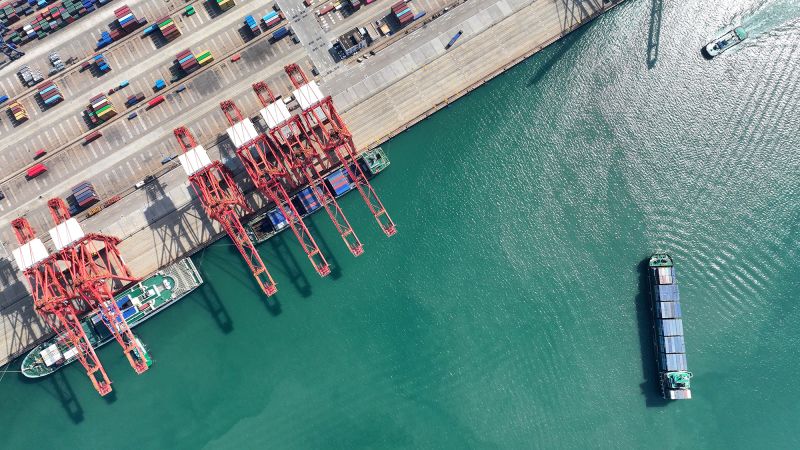The ongoing legal battles concerning President Donald Trump’s tariffs have sparked a considerable amount of discussion regarding the future of import taxes in the United States. A recent court ruling suggested that Trump may have overstepped his presidential authority by utilizing a national emergency to enforce many of his tariffs. Nevertheless, signals indicate that regardless of the court’s decision, Trump’s tariffs will most likely endure in some capacity.
Even before the court’s decision, which took place on a Wednesday, internal conversations within the West Wing had been generating various contingency plans. These discussions centered around alternatives should the courts deem his broad and unprecedented application of emergency powers invalid. According to two senior administration officials who communicated with CNN, there remains a belief that they possess a robust case and are optimistic about winning in court. However, they also acknowledge the existence of backup strategies that could allow them to achieve similar tariff-related objectives without relying solely on the currently contested authority.
The administration sees several potential avenues to pursue alternative tariff options if required. Among these, Section 122 of the trade laws allows the president to establish tariffs of up to 15% for a maximum duration of 150 days. This is intended to address what is referred to as “large and serious United States balance-of-payments deficits,” typically occurring when the value of imports significantly surpasses that of exports—a situation described widely as a trade deficit. Presently, the United States is grappling with an $87.6 billion goods trade deficit, as reported by the Census Bureau. Although Trump often argues that large trade deficits demonstrate the country is being taken advantage of, many economists contend that such deficits can also signal a robust economy capable of stimulating global market interactions.
Initially, the administration considered leveraging Section 122 to implement heightened tariffs but ultimately opted against it due to the imposed 150-day timeline. Should this route be taken, the current baseline tariff of 10% across various countries’ exports could potentially be replaced. Following the lapse of the 150-day period, Congress would then be required to authorize any subsequent tariff continuance.
Another legislative path available is Section 232, which considers national security implications and allows for the imposition of higher tariffs in specifically identified sectors, contingent upon the results of a mandated investigation. An example produced by the administration includes a Section 232 inquiry into critical mineral imports, which posited that over-reliance on foreign sources could jeopardize U.S. defense capabilities and impede infrastructure development.
The Section 232 investigations have catalyzed the introduction of 25% tariffs on a range of goods, including steel and aluminum, and will remain in effect regardless of developments surrounding emergency-related tariffs. Although President Trump has not emphasized these sectoral tariffs recently, market analysts speculate that if the White House finds itself constrained by country-specific tariffs, shifts in focus back to sectoral tariffs may occur.
Section 301 further widens the scope for the United States Trade Representative (USTR) to investigate nations potentially violating established trade agreements. During his first term, President Trump employed Section 301 to impose tariffs on various Chinese goods and specific European imports. Although investigations tied to Section 301 are longer and include public comment periods, they do not have a ceiling on tariff levels or duration, providing latitude for the administration’s tariff strategy.
Interestingly, a lesser-utilized law exists under which Trump could impose tariffs as high as 50% if he believes certain countries are creating adverse trade conditions for the U.S. However, enacting such tariffs could trigger significant international backlash and accusations of violating World Trade Organization agreements.
In spite of the court’s ruling setbacks, officials in the administration assert that Trump’s perspective remains unchanged—a sentiment crucial for maintaining leverage in ongoing trade negotiations with various countries. Those talks currently number 18 separate bilateral negotiations, with tariff threats being used as key leverage. An official reiterated Trump’s unwavering commitment to this strategy, stating emphatically, “President Trump is 100% serious about this.”



